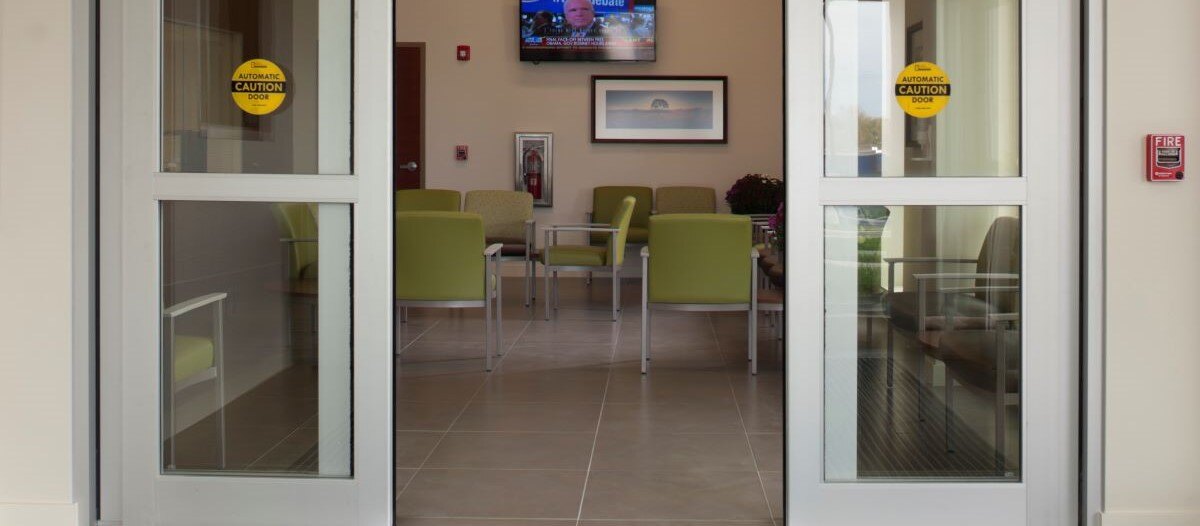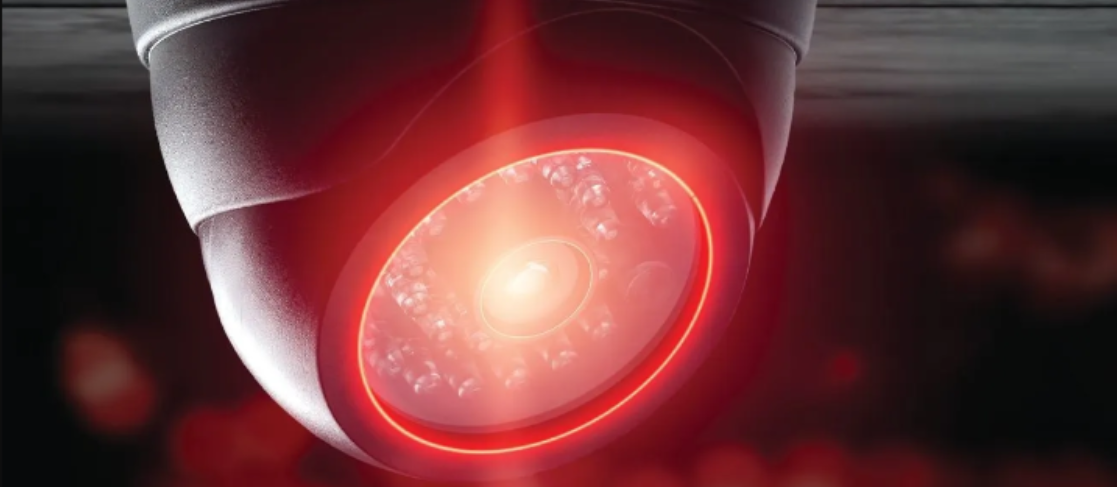Ease the Burden
Using interior materials to increase efficiency

In the fast-paced, resource-constrained world of health care facility management, the imperative to ensure the longevity, functionality and safety of physical infrastructure has never been more critical. As the global health care industry contends with staffing shortages from clinical to cleaning personnel, facilities are perpetually balancing the dual demands of delivering aesthetic appeal and upholding stringent disinfection protocols. This balancing act occurs under the meticulous scrutiny of inspectors who monitor everything from disinfection standards to the fire-safety integrity of doors. On this precarious tightrope, noncompliance is not an option for health care facilities — it risks shutdowns, revenue loss and further strained maintenance budgets.
Amid these challenges, the importance of aesthetics, safety and functionality in health care facilities remains paramount, especially in response to increasingly tough regulations. Well-designed environments are not mere luxuries; they play a critical role in promoting healing and well-being, offering calm and comfort in stressful situations. Simultaneously, rigorous safety protocols ensure a hazard-free space, safeguarding patients and staff alike. The functionality of a facility directly impacts its ability to deliver high-quality, efficient care. As regulatory bodies impose more demanding standards, these essential elements must not only be preserved but enhanced. Stringent regulations can act as a catalyst, spurring facilities to innovate and improve. By embracing the challenge of compliance, facilities can elevate the overall patient experience and operational quality, demonstrating their commitment to excellence and their capacity to adapt and thrive in an evolving landscape.
An emerging solution is the adoption of innovative construction products specifically designed to withstand the rigors of a health care environment.
The current landscape
According to an October 2021 report from the American Hospital Association, three in 10 health care workers considered leaving their profession due to pandemic-related stress, leading to widespread shortages and increased staff turnover in essential departments. Hospitals have consequently faced a 15.6 percent increase in labor expenses compared to pre-pandemic levels, and fewer staff are available to address maintenance and hygiene needs.
Meanwhile, the need to combat health care-acquired infections (HAIs) through proper disinfection and cleaning regimens is a prevalent issue. HAIs in U.S. hospitals alone have direct medical costs of at least US$28.4 billion each year. They also account for an additional US$12.4 billion from early deaths and lost productivity.
Strict disinfection protocols are essential for managing an expanding host of pathogens like MRSA, VRE, C. diff, CRE, and Candida. Despite the clear benefits of disinfection protocols in reducing HAIs, they also present challenges.
Between 2012 and 2017, advancements in infection prevention and control efforts led to a decrease in deaths from antimicrobial resistance and specific HAIs. However, the COVID-19 pandemic reversed much of this progress, resulting in increased antimicrobial use and difficulty in adhering to these guidelines. This led to a 15 percent increase in both resistant hospital-onset infections and deaths during the first year of the pandemic.
The practical implications of these enhanced protocols are considerable. The quality of cleanliness tends to decline when facilities are understaffed, training is required for new cleaning practices, and contractors who are not up to date with changing facility standards complicate maintenance. Available workers often must prioritize areas for cleaning, which, while necessary, can leave less critical but still important areas de-emphasized.
Furthermore, common interior surfaces are already vulnerable to impact and abrasion damage. They now suffer increased wear and tear from frequent cleanings and the chemicals used. Damaged surfaces become harder to sanitize properly while also becoming less visually appealing to patients and family members.
Regulatory pressures
Health care facilities face immense regulatory pressures, constantly monitored by inspectors for everything from disinfection standards to fire safety. For example, in March 2023, the Centers for Medicare and Medicaid Services (CMS) issued a memo outlining more stringent enforcement for infection control deficiencies, particularly those resulting in actual harm or immediate jeopardy to patients or facility residents. The new guidelines detail a series of escalated enforcement actions, including discretionary denial of payment for new admissions and substantial civil money penalties.
The threat of noncompliance in health care facilities, especially concerning infection control and fire safety, is not just a matter of regulatory obedience but a critical concern for patient safety and operational viability. These standards represent a thin line separating a fully operational facility from one facing temporary shutdowns and financial repercussions.
An emerging solution
In light of these daunting challenges, an emerging solution presents itself in the form of innovative construction products specifically designed to withstand the rigors of a health care environment.
Wall protection
Walls are the most likely to encounter destructive forces like crashing gurneys, runaway carts and accidental scrapes. Wall protection products built specifically to resist impact perform well here.
Manufacturers are now offering impact-resistant wall protection products that are tested for ram-type impact in accordance with applicable provisions of ASTM F476-84. These also offer chemical and stain resistance in accordance with ASTM D543 and are tested in accordance with ASTM E84 for composite (sheet and adhesive) Class A/1 fire performance characteristics of flame spread (25 or less) and smoke development (450 or less).
On the aesthetic side, wall protection has advanced light years when it comes to design. These products can be specified in a wide variety of colors, wood grain patterns and textures. Some manufacturers can provide custom graphic designs and color match options.
For example, at a rehabilitation and skilled nursing company in Maryland, USA, ownership wanted to show their commitment to providing localized, personalized care with renovations to two of their facilities. The architects and facility managers sought to create a space that felt more home-like instead of institutional. Durable handrails and crash rails in modern colors were utilized in one facility’s main lobby, dining room and first-floor unit corridors to serve residents and visitors who pass through these areas. An attractive wall protection system was used as an eye-catching, durable facade on a custom-built nurses’ station and the receptionist’s desk in the main lobby, while the third-floor hallway was modernized with wall protection that corresponded to products in other parts of the facility.
Doors
Doors are a close second when it comes to products most likely to incur damage from near-constant use. With the dynamic movement of hundreds of slams per day coupled with those same gurneys and carts, doors must also be constructed of impact-resistant materials.
Door finishes are available that combat bacterial growth (ASTM G-22-96 and ASTM G-22-2013), inhibit fungal growth (ASTM G-21-96 and ASTM G-21-2013), and resist common stains (ASTM D1308-93). These doors have a subtle surface texture that not only conceals scuffs and marks but allows for easy cleaning without accumulating oils and liquid residues. They are compatible with standard, nonabrasive, commercially available cleaning agents. In contrast to painted or varnished doors, these finish materials remain robust through numerous cleanings, maintaining their color and design integrity without showing signs of wear.
Finishes are available in an array of styles, ranging from simulated wood grain and patterns to custom graphic prints, ensuring that function does not compromise aesthetics. Certain designs also allow for easy replacement of finish panels, eliminating the need to replace the whole door when in need of a fresh look or repair.
Flooring
Entrance flooring can help trap dirt, grit, water and other particles that hitch a ride on shoes, wheelchairs, crutches and walkers. Selecting anti-slip entrance flooring materials is also an effective way to reduce slips and falls, especially during winter months as people transition from a wet exterior environment to a dry interior. These high-performance products reduce maintenance needs, lower the risk of liability and can even contribute to better indoor air quality (IAQ).
These options also exist for organizations wanting to create an environmentally responsible facility as part of their design goals. Sustainable environments benefit hospitals for not only the health of the environment, but all who come in contact with it as well. Product design and durability are critical to ensure long life and to support a more sterile environment. Selecting products that contain safe and healthy materials is equally important. One medical center designer chose a Cradle to Cradle Certified® entry grid system based on its ability to make a stunning first impression and greatly reduce trip/fall accidents by stopping 98.6 percent of dirt and water at the door. The entry grid has a smooth rolling surface that can withstand the heavy wheel loads of the health care environment. The system achieved the goals of improving IAQ and significantly reducing floor cleaning costs.
Action Items
FMs in the medical sector play a pivotal role in addressing life and patient safety issues, ensuring that crucial building systems are well-maintained for seamless operation. An FM’s expertise in identifying risks and spotting opportunities for enhancement is invaluable. When it comes time for a material upgrade or repair, these quick action items can help a facility manager prepare for discussions with designers and manufacturers related to specifying new materials:
- On the Rounds – Consider performing an informal visual assessment, jotting down areas that show evidence of impacts, abrasion, and wear and tear. Look for patterns of staff, patient and visitor movement. Where are impacts most likely to occur? Which walls are touched most frequently?
- At the Desk – A quick look through past cleaning and repair work orders can help flesh out the visual assessment. Rate each area on a scale of one-to-five, five being at high risk of daily contact or impacts.
- Planning – When working with an architect or design team, ask about incorporating advanced interior materials and take time to review their specified materials for cleanability, durability and antimicrobial performance.
- Sourcing – Research manufacturers with a proven record on advanced materials. Make sure they can provide independent product test reports that support materials’ durability, antimicrobial and anti-slip claims. Manufacturers should be able to produce cleaning schedule recommendations and repair/replacement guidelines, which, in turn, can be used to estimate savings in staff hours, maintenance and replacement costs.
A transformative approach
For health care FMs seeking to balance aesthetics, safety and budget constraints, the integration of advanced construction materials can serve as a transformative approach to achieving all three objectives. The industry’s future lies not just in the capability of its clinical staff, but also in the resilience and appeal of its built environment.

References
aha.org/system/files/media/file/2021/11/data-brief-health-care-workforce-challenges-threaten-hospitals-ability-to-care-for-patients.pdf
cdc.gov/policy/polaris/healthtopics/hai/index.html
cmmonline.com/articles/examining-the-state-of-infection-prevention-in-2023
cms.gov/files/document/qso-23-10-nh.pdf
Read more on Operations & Maintenance , Real Estate and Workplace
Explore All FMJ Topics









